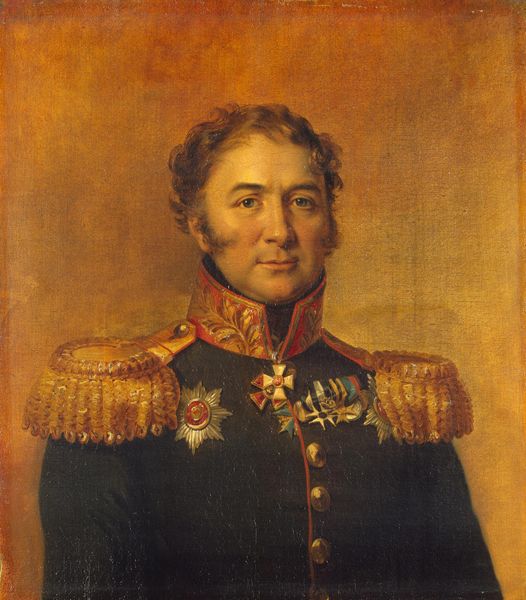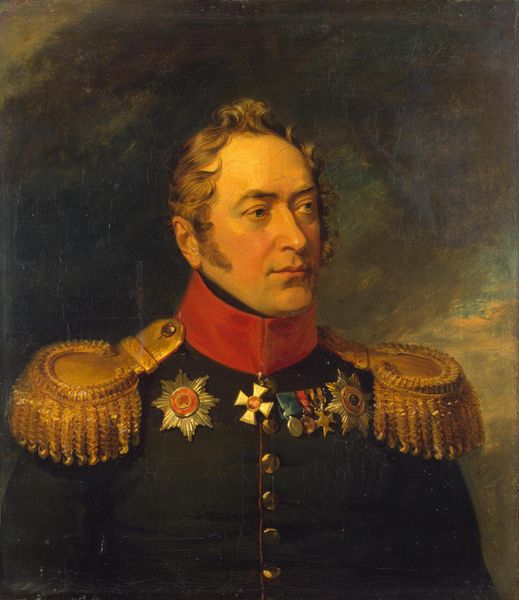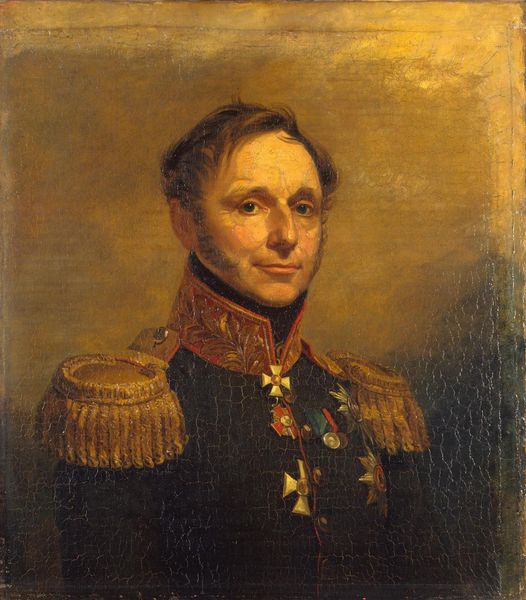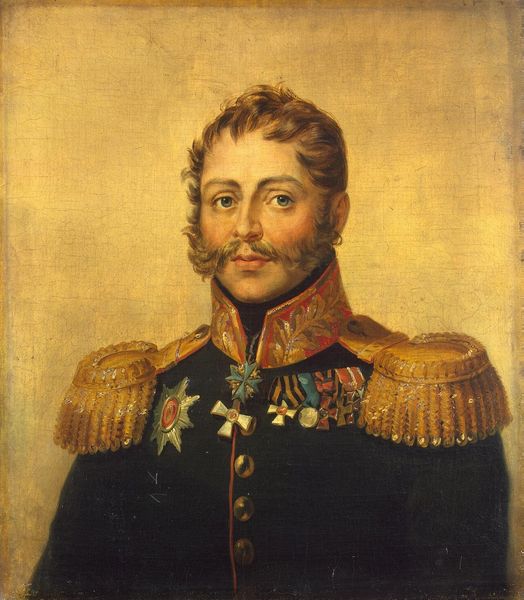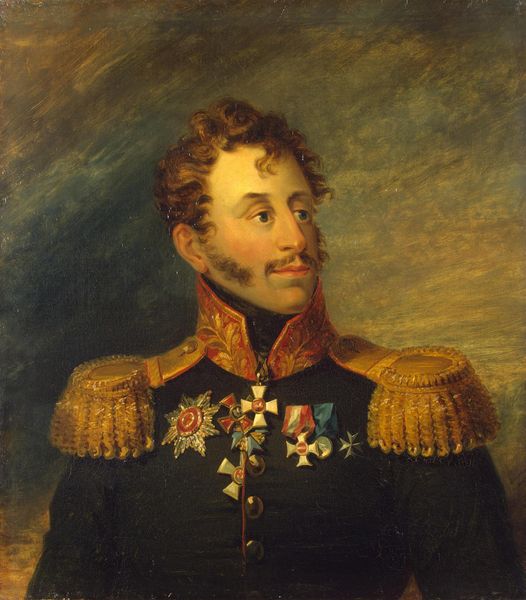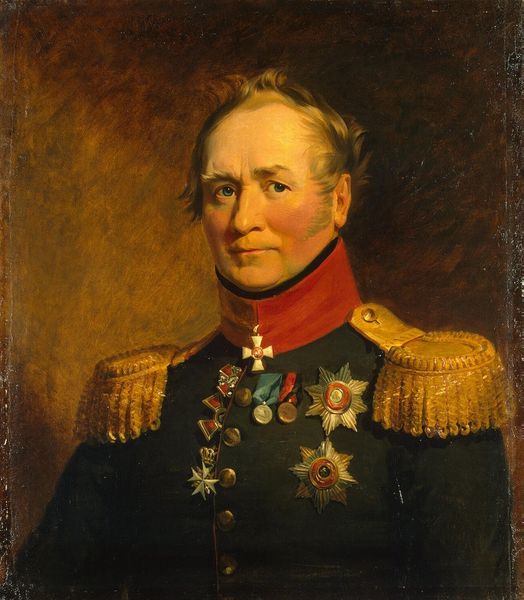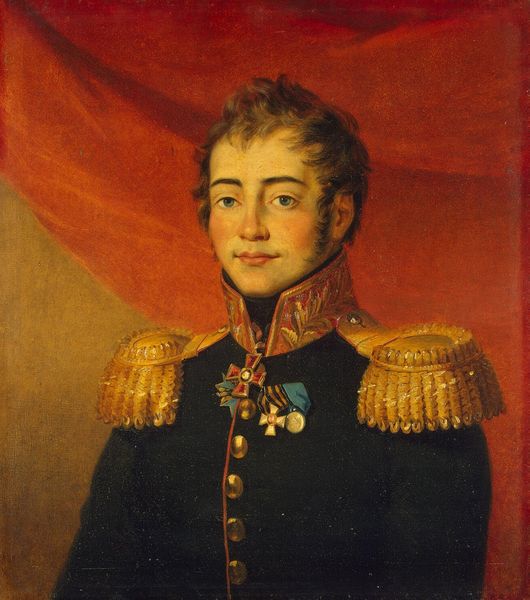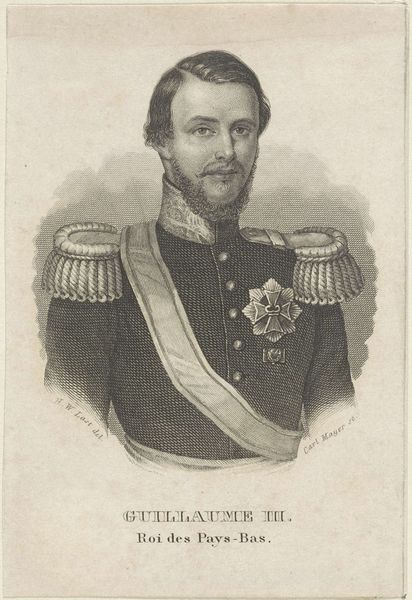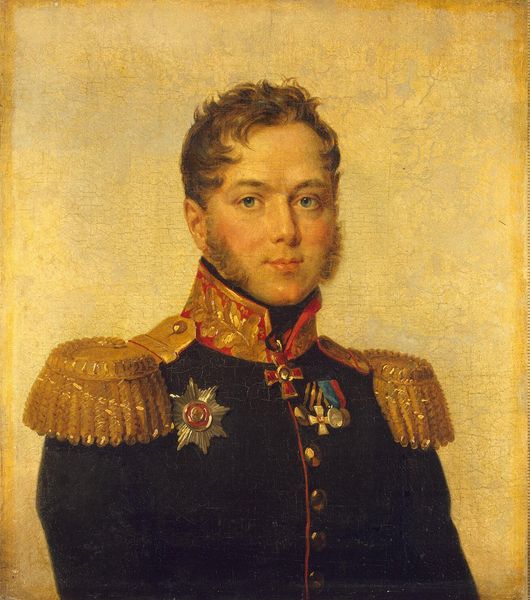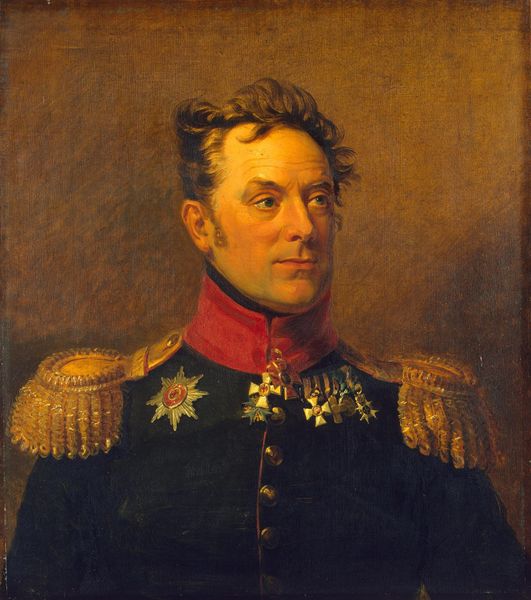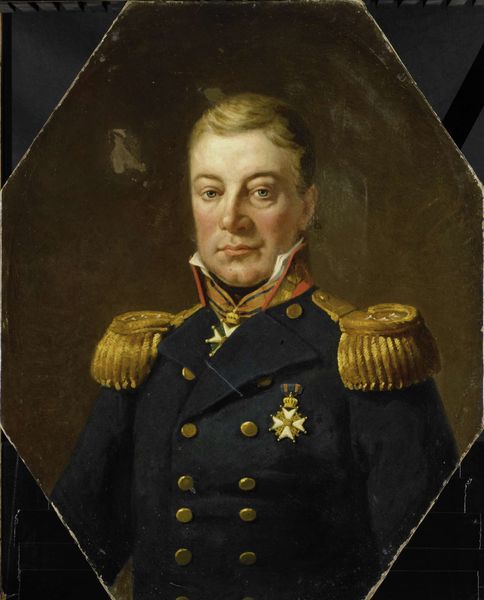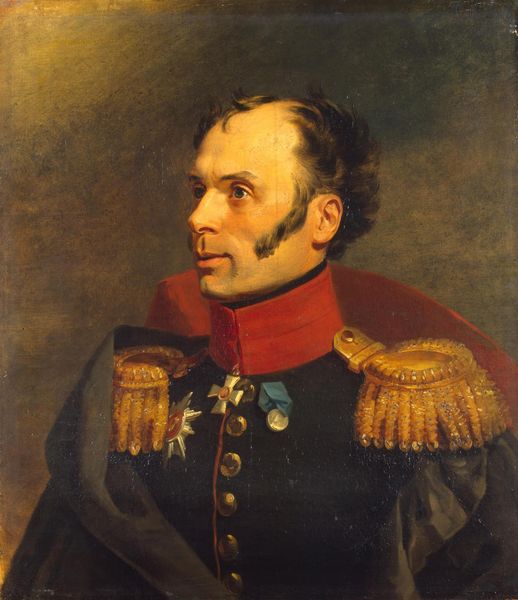
Copyright: Public Domain: Artvee
Curator: Here we have Anton Romako’s oil portrait, titled “The Naval Architect Josef von Romako as a Lieutenant,” believed to have been completed between 1849 and 1854. Editor: The first thing that strikes me is the sheen of those golden epaulettes against the darker jacket; it's quite an effective use of contrast. And that dark backdrop really heightens the formality of the portrait. Curator: It is fascinating to consider this depiction of Josef, who was both a family member and someone central to Romako’s world. The artist really seeks to underscore Josef’s position and status here. What kind of social codes do we see operating? What forms of power and authority does this uniform symbolize within that period? Editor: Absolutely. Beyond just status, I’m intrigued by the materials that define this piece. Think about the pigments Romako chose – were they easily accessible? How long would the gold paint of the embellishments take to prepare? There's labor and cost involved here that reflects something deeper about 19th-century Austrian society and art production itself. And the tailoring, the specific weave of the wool on the uniform--the quality is superb. Curator: Definitely, this Romantic Era portrait encapsulates a specific notion of masculine identity intertwined with imperial ambition. The controlled palette speaks to a calculated expression of authority, with Josef’s almost brooding gaze lending an introspective quality. Editor: The very act of commissioning such a painting implies an established infrastructure of art production. Skilled craftsmen had to create the canvas, prepare the paints... Even the frame surrounding this piece would've involved specialized labor. And consider the potential exchange value; how many bushels of wheat, or work hours, was this portrait 'worth' at the time? Curator: Looking at this portrait, I’m also drawn to questions about representation. What did it mean for Josef to have his image circulated in this form? It certainly participates in shaping perceptions of the Romako family and engineering profession through its display and dissemination. Editor: Right, because portraiture wasn't just about capturing likeness. It was about communicating status, wealth, access, control over resources—both material resources for producing the art and the symbolic capital it represents. I can get lost thinking about all the hands and processes this image passed through. Curator: Indeed, considering all of these threads deepens our understanding of the interplay between the individual, the artist, and the societal forces at play. Editor: Agreed. By examining not just the what, but the how and why, we start to understand art as something inherently embedded in social life.
Comments
No comments
Be the first to comment and join the conversation on the ultimate creative platform.
